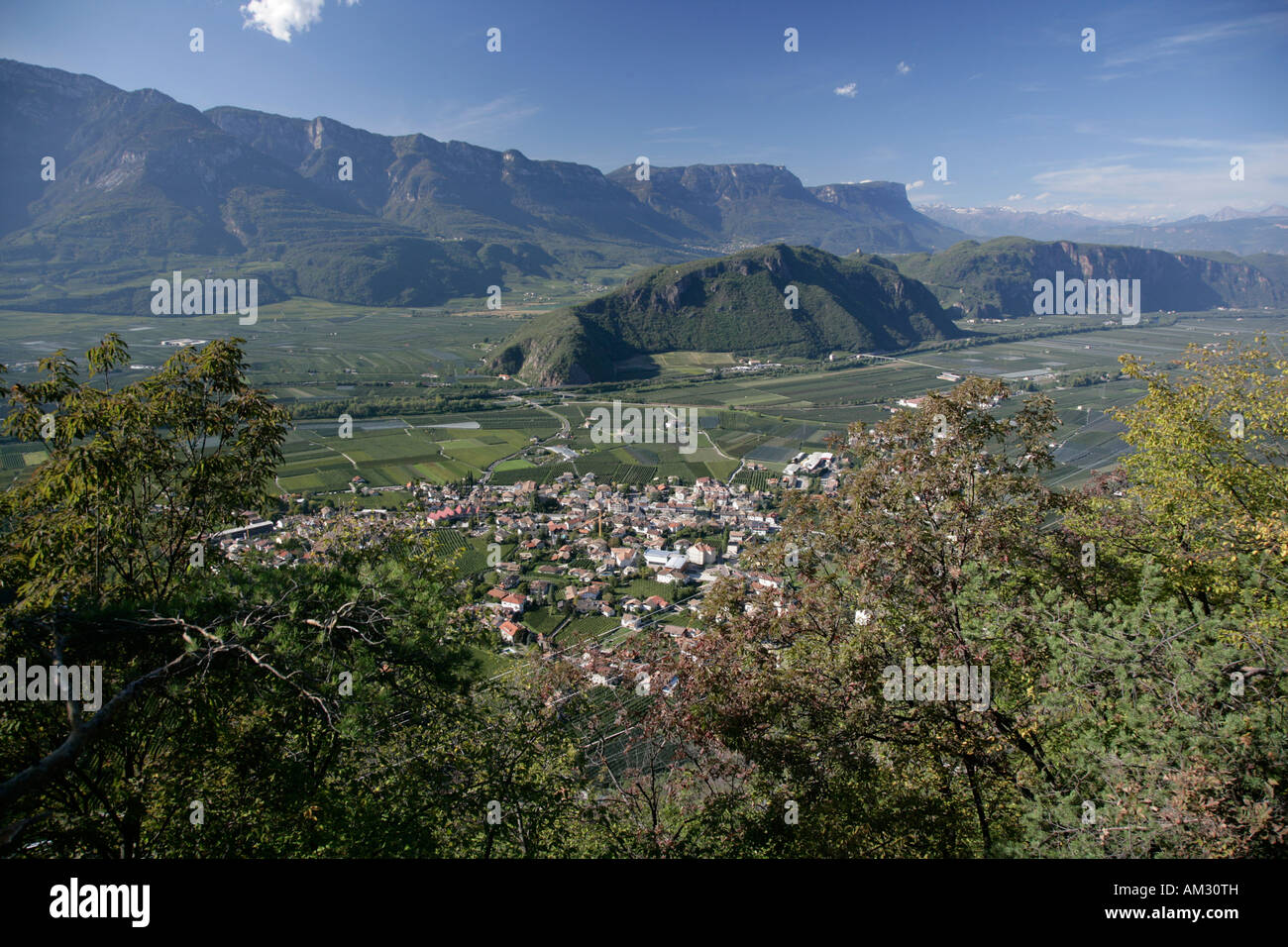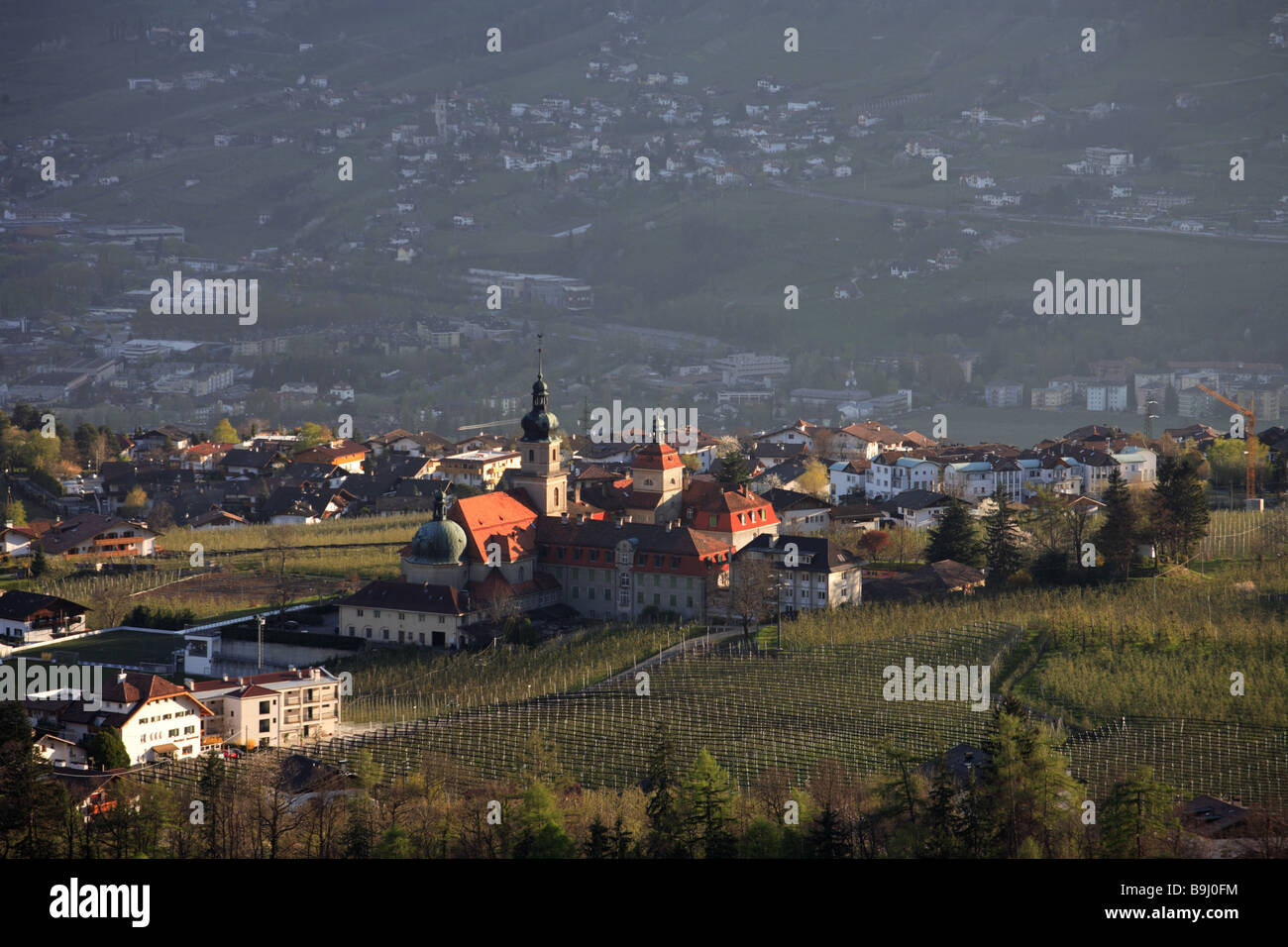Auer, South Tyrol
Ora ( Ora italian ) is a market town of 3542 inhabitants ( 31 December 2012) in the south of South Tyrol in Italy, about 16 km south of Bolzano.
- 4.1 center
- 4.2 St. Peter's Church
- 4.3 Marienkirche
- 4.4 biotope Castelfeder
- 5.1 Agriculture
Name
The name Auer developed by Egon Kühebacher from a derivative of the Old High German OHDP and thus means something like " water ", " surrounded by water country ", " peninsula ", which refers to the location of the village on the history of the Black Bach. Throughout history, the name evolved over spellings such as Aura, Owra, Awer Aur or the modern place names Auer, who won at the beginning of the 19th century.
Geography
Auer is located in the country as a section of the Adige Valley from Bolzano in South Tyrol is called to Salurn. The municipal area, a total of 11.82 km ², extends largely on the orographic left (east ) side of the valley between Branzoll in the north and in the south of Neumarkt and exceeds only in the southwest direction Tramin with a small section of the Adige. The built-up center ( 220-280 m asl ) lies mainly on a alluvial fan of the Black creek, which reached here coming from the east the Alps Fleimstaler the valley floor. While the church just south of the community center ends on hill of Castel spring and there is adjacent to coal, it stretches northward from far direction Pfatten and Branzoll. Its highest points reached Auer to the lowlands flanking the east side of the steep slopes Regglbergs, through which runs the border with the neighboring community Aldein.
History
Auer belonged to the end of the First World War for the judicial district of Neumarkt in Tyrol and was part of the district of Bolzano.
Important personalities visited Auer
1551: The elephant Soliman returned in the inn "In the Ilben " (today's Hotel Elephant) a. He was a gift from King John of Portugal to his nephew, the then Archduke Maximilian in Vienna. The elephant came with his companions and made "In the Ilben " rest, in order to strengthen themselves for the journey to Vienna. In the lobby of today's Hotel Elephant (name from 1826) depends to commemorate a plaque with the saying: "Once there was a big elephant from the south in our country. In this house, because he was to get up and ate and drank lots of good wine. Saturated happy and cheerful, he moved back further. "
1765: Emperor Franz I went with his wife, Empress Maria Theresa to Innsbruck to prepare for the wedding of her son Archduke Leopold. Empress Maria Theresa remained in Innsbruck, while Francis I. his daughter, the Spanish Infanta Isabella opposed traveled. Their meeting took place (now the Post Office ) in Abrahamhof.
The Sage: " sinking of the Golden City Auer "
" At the site of the present village Auer once stood a great city, because of their beauty and their wealth was called" Golden City ". However, since the inhabitants led a dissolute and depraved lifestyle, God decided to destroy the city. One day, the only God-fearing young man, an angel appeared and brought him the message that he should the next morning to go to Mount, and then he 'll see the wonders of the Lord. He did as he was told. Straightway opened the windows of heaven, and he witnessed how the sinful city in the floods sank - only solely the Peter church was miraculously spared " (extract from: . Culturally informative walking guide for Auer Aldino- Neumarkt -Montan - Truden - Altrei, transport association Auer ) Today the fresco remembers the building of the Savings Bank of the legend.
Attractions
Center
Large parts of the slope upstream village consist of narrow winding cobbled streets with often more than man- high stone walls on both sides.
St. Peter's Church
The St. Peter's Church is located at the southern entrance to the old state road towards Neumarkt. Since it was first mentioned in the 11th century, the sacred structure should represent the oldest building in the community. In its current form is a Gothic building from the 15th century with a Romanesque church tower of the 12th century. Due to frequent flooding and the resulting rock and Erdablagerungen the parish is about five meters lower than the surrounding terrain. The church entrance is therefore accessible via a staircase down.
St. Mary's Church
St. Mary's Church is located in the pedestrian zone of the historical town center ( Oberdorf ). The present parish church was inaugurated in 1674 as an alternative for the church often vermurte and therefore not usable St. Peter Church. You had to go to the same place, built in the 13th century, the Holy Jodok consecrated, soft smaller chapel. The lower part of St. Mary's Church dates back from the Jodokuskapelle and was placed in its present form only in 1776. Inside there is a Baroque high altar made of marble with a life-size statue of the Virgin. The two wooden side altars are dedicated to St. Anthony and St. Joseph.
Biotope Castelfeder
The hill lies to the south Castelfeder above between Auer and mining. On it, there are prehistoric, Roman and early medieval settlement traces.
Economy and infrastructure
The village is located on the burner route, and thus the main axis of the north-south traffic. By Auer and Auer to lead past the burner state road, the Brenner motorway and the Brenner railway. In Auer, the road branches off to the Val di Fiemme. By 1963, Auer was also the starting point for the Fleimstalbahn.
A portion of the culture ground and some forest areas have been rezoned to a total of three industrial zones. Was a service and industrial center from the apple and wine-growing village.
In Auer is the Technical School of Economics and Technical College of Agriculture.
Agriculture
Empress Maria Theresa (1740-1780) played a very important role in today's agriculture. You configured the draining of the marshes for the whole valley. In a hundred years of work, the valley floor was entsumpft and thus evolved to today's fertile cultural landscape. Today, agriculture is dominated by orchards and vineyards. In orchards are V.A. Grown apple varieties, such as Golden Delicious and Morgenduft. Above all, the wines Lagrein and Vernatsch are commonly grown. Approx. 80 % fall in the production of red wines, only 20% of the varieties belong to the white wine.
Policy
In addition to the Mayor Roland Pichler from the village list Auer and his deputy, Claudio Mutinelli of Insieme - togetherness - Adum the existing twenty members council controls the fortunes of the town.
It is composed as follows:
- Village list Auer - 9 seats
- South Tyrolean People's Party ( SVP) - 5 seats
- Democratic Party - 3 seats
- Insieme - togetherness - Adum - 2 seats
- Il Popolo delle libertà - 1 seat
Pictures
Station Auer of the former Fleimstalbahn opposite to the train station of the Brenner railway
View of the mountain Mitter
St. Mary's Church








